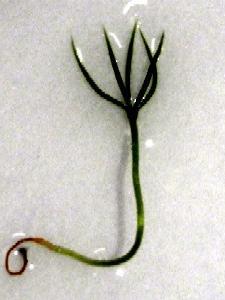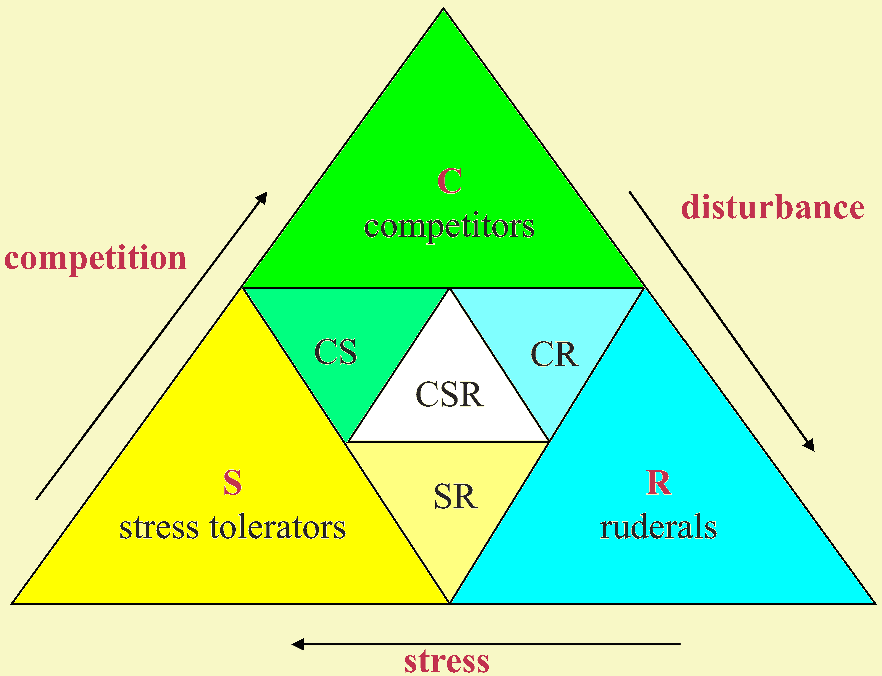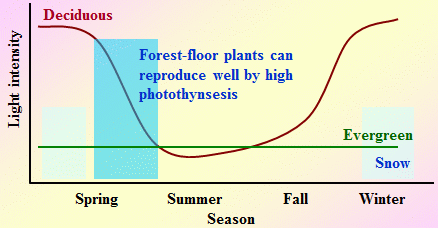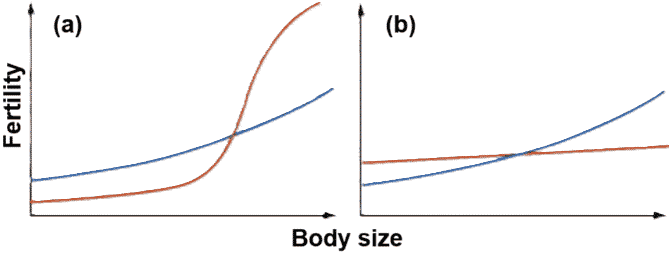(Upload on September 27 2024) [ 日本語 | English ]
Mount Usu / Sarobetsu post-mined peatland
From left: Crater basin in 1986 and 2006. Cottongrass / Daylily
HOME > Lecture catalog / Research summary > Glossary > Life history cycle
Life history stage (growth stage)≈ life cycle (on ecology)A system of interrelated adaptive traits forming a set of reproductive tactics There are various definitions on each life history stage, depnding on research objectives. This page is for terrestrial seed-plant community ecology. StageGrowth stages on terrestrial seed plants. Note that the definitions of seedling and junenile are totally fuzzy.

 [Left] A Picea mariana seedling emerged on a petri dish with three-layered filter paper in an incubator. The length is about 2 cm. [Right] A P. mariana seedling on burned ground surface after the 2004 wildfire (森林火災) at Poker Flat near Fairbanks, Alaska, on July 30 2007 (by Narita K).
[Left] A Picea mariana seedling emerged on a petri dish with three-layered filter paper in an incubator. The length is about 2 cm. [Right] A P. mariana seedling on burned ground surface after the 2004 wildfire (森林火災) at Poker Flat near Fairbanks, Alaska, on July 30 2007 (by Narita K).
|
ExamplesAnnuals (一年生)completing its life cycle from germination to the production of seeds within one growing season
Perennials (多年生, based on age)living more than two years

(DeGasperis & Motzkin 2007) Windows of opportunityTiming for establishing the life-history stage |
|
The combination of three strategies of plants:
Productivity
Competitors (C)Plants have high competition ability when low stress and disturbance are given. The high competition ability is evaluated by fast growth rate and high productivityStress tolerators (S)Plants adapt to high stress and low disturbance, by slow growth rates, long-lived leaves, and high nutrient retention rate. These are represented by species growing in alpine, arid, or sprpentine habitatsRuderals (R)Species favor disturbance with low stress, and are fast-growing. Plants that have adapted this strategy are often found colonizing recently disturbed land, and are often annuals |

⇒ Application to Succession (遷移)(☛ Q. an example) |
|
periodic plant and animal life cycle events
Ex. seed germination, leaf flushing, flower production, defoliation Spring ephemeral (春植物)Producing flowers immediately after snowmelt and completing the life-cycle by early summer
be perennial that can reproduce by underground organs in each spring soon after snow melting  Fig. Seasonal changes in light intensity on the forest floor of deciduous and evergreen forests |
Representative speciesAdonis ramosa (フクジュソウ), Adoxa moschatellina (レンプクソウ), Allium monanthum (ヒメニラ), Amana edulis (アマナ), A. erythronioides (ヒロハノアマナ), Anemone debilis (ヒメイチゲ), A. flaccida (ニリンソウ), A. nikoensis (イチリンソウ), A. pseudoaltaica (キクザキイチゲ), A. soyensis (エゾイチゲ), Erythronium japonicum (カタクリ), Trillium smallii (コジマエンレイソウ), Soldanella alpina L. (イワカガミダマシ, alpine snowball)Five species often shown in my lectures for international students
Trillium kamtschaticum (オオバナノエンレイソウ) |
[ reproduction ]
|
vegetative stage = often immature stage ↔ reproductive stage = mature stage, anyway sex ratio: polygamy (多系), vegetative propagation, monogamy Sexual form
|
2. Factors controlling the amount of recmbination per generation; controlling operative at fertilization
d. brdding system j. length of generation [ cytogenetics ] Sex determination (性決定)Sex chromosome (性染色体)Sex transformation (性転換)protogyny (雌性先熟)protandry (雄性先熟)  Fig. 1. The size advantage hypothesis represented by fish. Expected female offspring production (blue line) increases with body size if large females can lay more eggs. Expected male offspring production (red line) may increase strongly with body size if, for instance, large males breed with many more females than do small males. Sex change is favored when the size-(or age) specific fertility curves of the sexes cross. Female-to-male sex change ((a) protogyny) is favored when the fertility of an average male increases more rapidly than the fertility of an average female. Male-to-female sex change ((b) protandry) is favored when fertility of an average female increases. (Munday et al. 2006) |